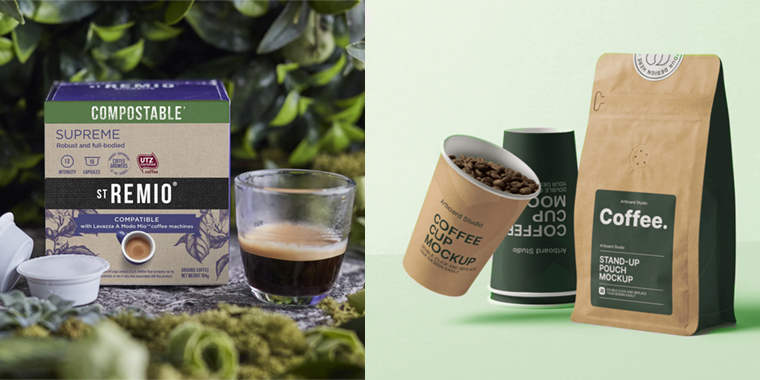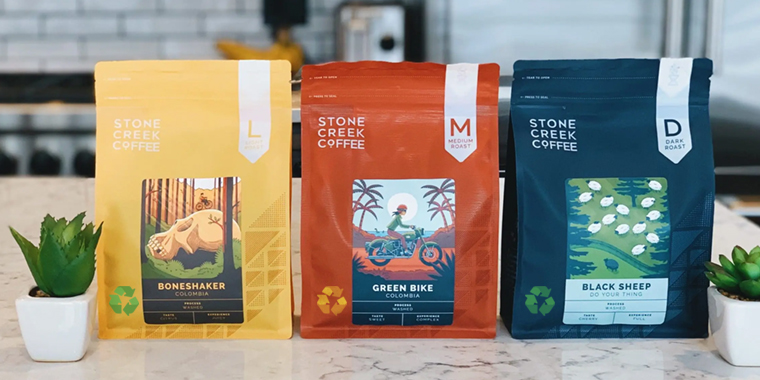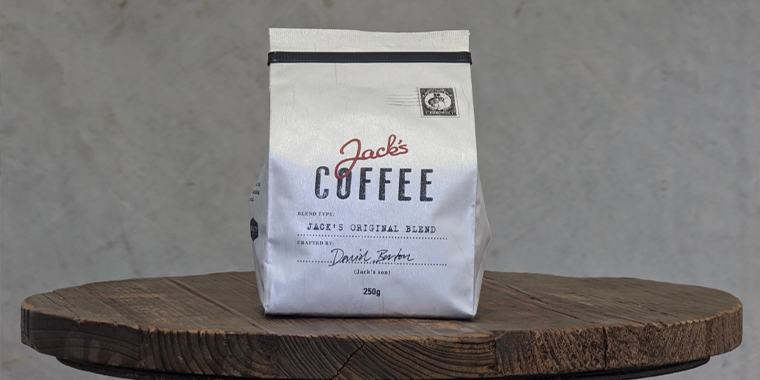September 16, 2025

In recent times, green packaging has gained popularity among coffee brands all around the world. As more businesses seek greener alternatives, there are two most famous types. These include biodegradable and recyclable coffee packaging.
Each has its own benefits and limitations. If you’re a business owner in the coffee industry then this blog is for you. It will help you in selecting the best packaging for your needs.
This blog will give you a thorough insight into biodegradable vs recyclable coffee packaging to consider before selecting one of these. So, start reading!
Biodegradable coffee packaging is made from natural materials that turn into harmless substances. This process requires specific conditions. Compostable coffee cups are one of its examples.
The most common materials for this packaging include :
This kind of packaging offers many advantages. Some of them are as follows:
There are also some disadvantages of this packaging. Let’s review them:

This kind of packaging is processed and reused for the production of new materials. This reduces waste. Paper coffee cups are one example of this packaging.
The following are the materials that are normally used for this coffee packaging:
There are many advantages to this packaging. Let’s discuss some of them:
This type of packaging also has some disadvantages. Some of them are mentioned below:
To choose the right packaging, it’s important to understand how these two options compare. Let’s discuss their key differences:
Biodegradable packaging comes from renewable resources, while the other uses plastics or metal laminates.
Recyclable packaging requires collection and processing. In contrast, the other process occurs naturally.
Biodegradable packaging has a minimal environmental impact, while the other one depends on efficient recycling systems.
Biodegradable packaging is more expensive due to production costs, while recyclable options are more affordable.
Recyclable packaging offers better protection, as compared to the other type of coffee packaging.

Some brands are adopting these packaging solutions, as they offer the best option.
It integrates biodegradable components with recyclable structures. For example, a coffee bag may have a recyclable outer layer with a compostable inner lining. This ensures durability while reducing waste.
The benefits of hybrid coffee packaging are mentioned below:
The best packaging choice depends on your brand’s values, budget, and customer expectations. Consider the following factors:
Consumer Preferences – If your target audience prioritizes waste reduction, biodegradable packaging may be the best option. Recyclable packaging is more practical in areas with strong recycling programs.
Product Requirements – If your coffee requires a long shelf life, recyclable packaging is the better choice. Biodegradable packaging works well for fresh, locally distributed coffee.
Market Trends – Some regions provide incentives for biodegradable materials, while others focus on recycling systems.
Environmental Goals – Consider your environmental commitments and select packaging that aligns with your objectives.
Cost and Availability – Compare the costs of both options and select the materials that are readily available.
Both biodegradable and recyclable coffee packaging has its strengths and limitations. Biodegradable packaging is great for waste reduction but requires composting facilities. Recyclable packaging is affordable but depends on recycling systems.
Choosing the right option depends on your brand’s goals, customer base, and regional infrastructure. By understanding the differences, you can make an informed decision that balances sustainability, practicality, and cost.
At Custom Designs Boxes, we provide custom printed coffee packaging that is custom-made as per your requirements. Contact us today via email at sales@customdesignsboxes.com to explore our eco-friendly packaging options!
Find the perfect packaging solutions tailored to your industry niche.
Don't just imagine – experience excellence up close, as you can check our superior craftsmanship before making your decision by ordering your sample kit.
